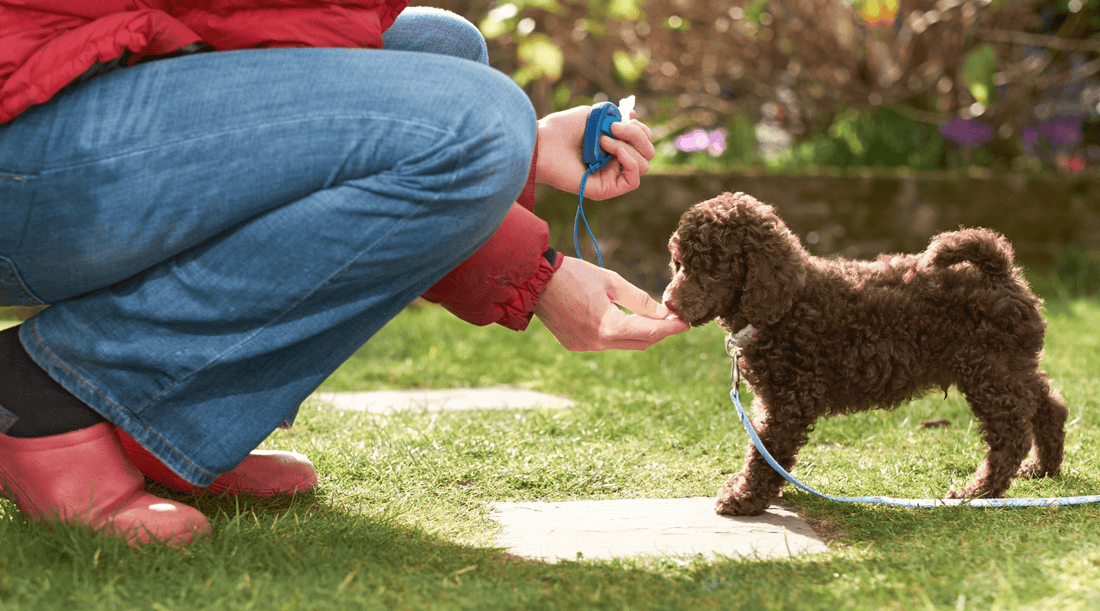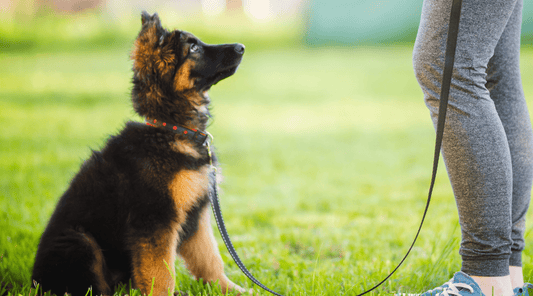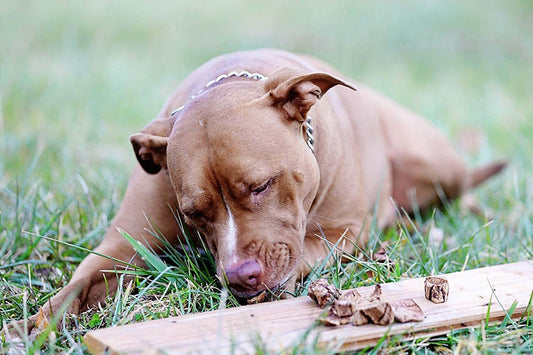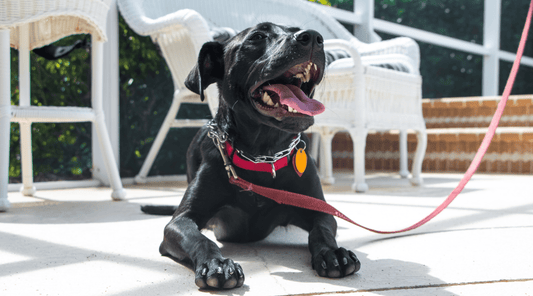Marker Training for Dogs: The Secret Weapon in My Pocket
Dawn Miller Apr 29, 20254 Minute ReadWant to know how to train a dog fast? Eliminate the ambiguity. And streamline communication with your dog. Nothing does it better than marker training for dogs. And I found out so many don't know this.
I don’t mean to brag. But I’ve got a secret weapon in my pocket—and no, it’s not a squeaky toy or a lint-covered treat (though there’s usually one of those too).
It’s a palm-sized clicker. Or sometimes, just my voice saying “yes!” in that sing-songy way that makes all three of my dogs whip their heads around like I just promised them a steak dinner.
And there it is. It’s simple. It’s powerful. And when you pair it with the right dog treats, it turns even the most distracted tail-wagger into a focused training machine.
Just ask my neighbor Janine. Last Saturday at the park, her retriever was playing “let’s pretend I don’t know you” when called. Meanwhile, my terrier Pixie came flying to me from across the field like she was chasing a squirrel made of bacon.
Janine looked at me like I’d unlocked some ancient secret. And in a way… I had.
What Is a Marker Word in Dog Training?
A marker is any sound that tells your dog, "Yes, that’s it!".
You could choose a word like "yes," "good,". Or use a dog clicker. You can get one for all of $5 on Amazon.
What matters most is consistency. The sound becomes a promise: "A reward is coming."
And dogs are all about that cause-and-effect life. They hear the marker. They expect a treat. Their brains light up with happy anticipation, kind of like mine when someone says the words "dark chocolate".
You can use verbal markers (like yes) or mechanical ones (like clickers). I like to mix it up depending on what we’re working on. Clickers are great when I need perfect timing. Verbal cues work when my hands are full of leashes, poop bags, or coffee—and it's usually all 3.
Why Is Marker Training So Effective?
When you're training a dog with treats, there may only be a half a second between the command being followed and the treat, but timing matters.
That tiny delay can be the difference between: Is my human rewarding this action or that one?
The delay becomes even more of a divide when you have a hyper dog who can never stay still for longer than a split second.
Now, with simple commands like sit or stay, they figure it out pretty quickly. Dogs are smart. But for more complex skills, that have several steps, your dog can get confused fast. And their human, well, we can become frustrated.
So, a marker can open up a whole new world of advanced dog training. Because it's clearer what you're rewarding, your dog can learn faster. You and the world seem more predictable.
How Marker Training Works
The moment they sit, you mark. The second they stop barking? Mark. They glance at you for guidance instead of lunging at a squirrel? Mark.
That sound becomes a celebration. With enough practice, your dog starts showing you good behavior more often just to hear the praise.
And here's the really good news. They don't have to hear it every time or get a treat.
Intermittent reward—having a chance to get rewarded sometimes—is actually more effective for maintaining a behavior.
Marker training is a form of Positive Reinforcement Dog Training. It's great to have well-behaved dogs, and it's also phenomenal for dog health. Dogs thrive on routine and want to understand you.
How to Start Marker Training for Dogs
Ready to give it a go?
Here’s how I introduced it to Bruno, my big ol' lab mix with a heart of gold and a brain that sometimes short-circuits at the sight of delivery trucks. Here's a look at Clicker Training for Dogs.
- Choose a Marker - You can say "yes", "nice", or even "sweet" in a cheerful voice, or grab a clicker. Whatever you choose, stick with it for a while. You can add the other later.
- Charge the Marker - This just means helping your dog connect the sound with the reward. For example, to charge "yes", do this. Click or say "yes," then immediately offer a high-value treat. No tricks required at this stage. You'll need to have a good 15 treats for this. I use K9 Connoisseur Beef Lung Dog Treats. These roasted organ meat treats are not only tasty and nutritious. I can break one treat into 3-4, so even if I need 15, one bag lasts a long time. Try that with some highly processed dog treats. It doesn't work.
- Practice with Simple Behaviors First - Ask for a "sit." As soon as their butt hits the floor, click or say your marker word, then treat. Timing is key. Don’t wait more than a split second, or they’ll associate the marker with whatever came next.
- Use in Real-Life Moments - Does your pup pause instead of bolting out the door? Click! Do they pause while barking at the delivery person? Click! And even better, if you see them looking at you instead of barking at the neighbor? Mark it! Eventually, looking at you may replace barking when they hear an odd noise since that's what you've rewarded. That's when you really know you've made it as an amateur dog trainer.
Over time, you’ll start seeing so much good stuff. I can't even express how pleasant it is to have dogs that don't alert bark at every little thing.
Follow the click with a treat sometimes after they've learned a new skill, and each time when teaching something new.
Treats That Make Training Click
Not all treats are created equal. When training with a marker system, you want rewards for dogs that are tasty, small, and easy to deliver fast.
Be sure to choose a high-value dog treat. Dogs learn faster when a treat is so good that it sets off a dopamine rush that tells the brain, "Let's do more of this."
My go-to? K9 Connoisseur's selection of dog treats, especially beef lung. These are crunchy, single-ingredient dog treats. They're not sticky and they don’t stink up my coat pocket (a real win).
Plus, they're packed with protein, making them a perfect choice for training sessions.
You can also rotate in chews like their glucosamine-rich trachea chews after a successful session. This reinforces calm-down time and gives them something to focus on.
And if you’re working with an especially food-motivated dog like my terrier Pixie, you might want to try their single-ingredient bone options to really seal the deal.
Pro Tips From My Dog-Loving Neighborhood
Want to make the most of marker training?
- Keep treats on you. Always. I use to stash them in every coat pocket like it’s survival gear. Then I found this treat pouch on Amazon. The magnetic clasps are so convenient, and it even has a little bag dispenser built right in.
- Keep sessions short and sweet. Two minutes of great training is better than 20 minutes of "meh."
- Follow up with mental enrichment. After a training session, I give my dogs a Dog Bone stuffed with pumpkin puree or marrow-filled dog bones. Keeps 'em busy and satisfied.
Want a full game plan? The 7-Day Dog Training Challenge walks you through everything you need to get started.
Available On:
Disclosure: This article may contain affiliate links, which means we may earn a small commission if you make a purchase through these links—at no extra cost to you. We only recommend products we trust and believe will benefit you and your K9.






